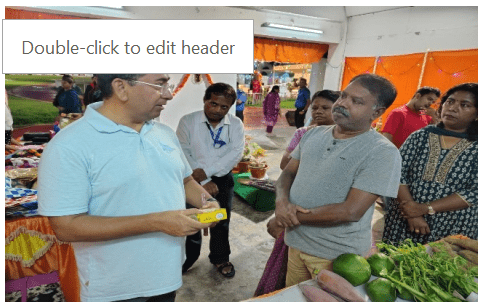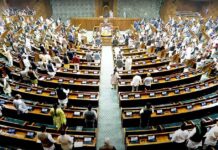A two-day exhibition-cum-sale organized by NABARD to mark its 44th Foundation Day concluded on a vibrant note at the ITF Ground in Sri Vijaya Puram. The event, dubbed SHG Mela 2025, brought together self-help groups (SHGs), artisans, and rural entrepreneurs in a celebration of innovation, self-reliance, and community spirit.
Thousands of residents visited the fair, which showcased over 140 stalls featuring handcrafted goods, organic produce, traditional foods, and GI-tagged items, turning the venue into a bustling hub of economic and cultural exchange. The event served as a platform for SHGs to directly engage with consumers, test markets, and build confidence in entrepreneurship.
The event saw participation from key officials, including the Chief Secretary of the Andaman & Nicobar Administration, Chandra Bhushan Kumar, who visited the stalls and interacted with SHG members and NABARD officials. He lauded the quality and diversity of the displayed products and encouraged participants to expand their reach and continue innovating. His presence added a boost of encouragement to the SHG members, many of whom are first-time entrepreneurs from rural backgrounds.
The mela was inaugurated a day earlier by Secretary of Agriculture, Pallavi Sarkar, who commended NABARD’s inclusive development model and its focus on grassroots empowerment. Representatives from major financial institutions also attended. Deputy General Manager of State Bank of India, Vivekanand Singh, acknowledged the key role SHGs play in driving economic resilience, while Santosh Sahu, Regional Manager of SBI, further highlighted the bank’s ongoing support for community-led financial initiatives.
Apart from commerce, the fair had cultural elements woven into the event, with performances that added vibrancy and showcased the rich heritage of the Islands. This fusion of economy and culture attracted a wide demographic, from schoolchildren and homemakers to government officials and urban buyers, amplifying the social impact of the event.
NABARD General Manager G Santhanam expressed gratitude to the administration, SHGs, financial partners, and the local public for contributing to the fair’s success. He emphasized the SHG Mela’s broader purpose of fostering innovation, building networks, and enhancing the spirit of rural enterprise. He added that the overwhelming response is a testament to the resilience and creative potential of the local population, particularly women-led collectives.
The event’s success reflects a growing appetite for sustainable and locally-sourced goods. Many of the SHGs reported brisk sales, and visitors left with renewed appreciation for the islands’ entrepreneurial ecosystem. The mela also spotlighted how local products can contribute to larger narratives of sustainability, traditional knowledge, and community empowerment.
NABARD officials indicated that such events would continue to be a key strategy in their outreach and development agenda, acting as incubators for micro-enterprises and providing exposure to otherwise isolated rural producers.
The SHG Mela 2025 thus served as more than just a commercial fair. It acted as a convergence point for policy, practice, and people, demonstrating how financial institutions, government bodies, and grassroots groups can collaborate effectively.
With growing participation and rising awareness, events like these could become a recurring feature of the Andaman & Nicobar developmental calendar, driving a wave of inclusive growth from the bottom up.





